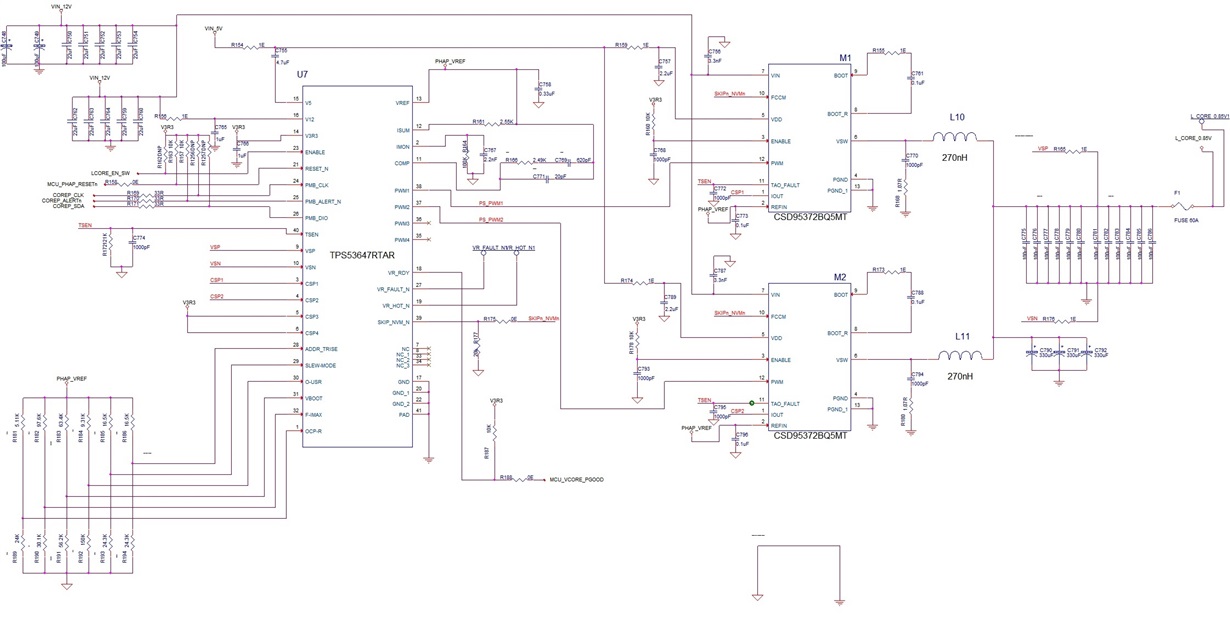Other Parts Discussed in Thread: TPS40428, TPS56720, TPS65400
We are planning to use TPS53647 in our application :
VIN = 12V
Vout = 0.8V to 0.9V with 0.85V (nominal)
Current = 50A Max
Programmable through I2C
Output voltage should be programmable
Enable option
I think it supports 120A current with all four phase.
Do i need to use all four phase for 50A current requirement?
Is it compatible with I2C bus interface?


